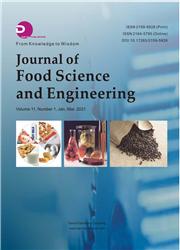Factors Influencing Salmonella Contamination and Microbial Load of Beef Carcass at the Yaoundé Slaughterhouse, Cameroon
引用次数: 0
Abstract
Delivering safe beef carcass at the Yaoundé abattoir is challenged by improper Good Manufacturing Practices (GMP) and poor hygiene practices leading to microbial contamination during slaughtering and dressing processes. This study was to estimate the safety and quality of carcasses via detection of Salmonella and evaluation of aerobic colony count (ACC), Enterobacteriaceae count (EC). Swabs of carcass from 145 cattle were collected at three different sites. Hides & anus from live cattle, butchers’ hands, and processing environment were also swabbed. Detection of Salmonella was carried out following ISO 6579. ACC and EC were evaluated using ISO 4833 and ISO 21528-2. Beef carcass registered higher Salmonella prevalence (4.37%). Generally, microbial load of carcass was beyond FAO microbiological criteria. The post-evisceration carcasses had the highest isolation rate of Salmonella (52.63%). Both sampling site and seasonal variations had statistically significant impact (p < 0.05) on microbial load. Our results reflected poor conditions of slaughtering and inadequate hygienic practices. There is an urgent need for training the abattoir personnel on the GMP and need for the implementation of Hazard Analysis and Critical Control Point (HACCP) principles throughout the slaughtering process at the Yaoundé slaughterhouse.影响喀麦隆yaound屠宰场牛肉胴体沙门氏菌污染和微生物负荷的因素
在yaound屠宰场提供安全的牛肉胴体受到不适当的良好生产规范(GMP)和不良卫生规范的挑战,导致屠宰和屠宰过程中的微生物污染。本研究旨在通过沙门氏菌检测和好氧菌落计数(ACC)、肠杆菌科计数(EC)的评估来评估胴体的安全性和质量。在三个不同地点收集了145头牛的尸体拭子。活牛的皮和肛门、屠夫的手和加工环境也被擦拭。沙门氏菌检测按照ISO 6579进行。ACC和EC采用ISO 4833和ISO 21528-2进行评估。牛肉胴体沙门氏菌感染率较高(4.37%)。总体而言,胴体的微生物负荷超出了粮农组织的微生物标准。除肉后的胴体沙门氏菌检出率最高,为52.63%。采样地点和季节变化对微生物负荷的影响均有统计学意义(p < 0.05)。我们的结果反映了屠宰条件差和卫生措施不充分。迫切需要对屠宰场人员进行GMP培训,并需要在整个屠宰过程中实施危害分析和关键控制点(HACCP)原则。
本文章由计算机程序翻译,如有差异,请以英文原文为准。
求助全文
约1分钟内获得全文
求助全文

 求助内容:
求助内容: 应助结果提醒方式:
应助结果提醒方式:


